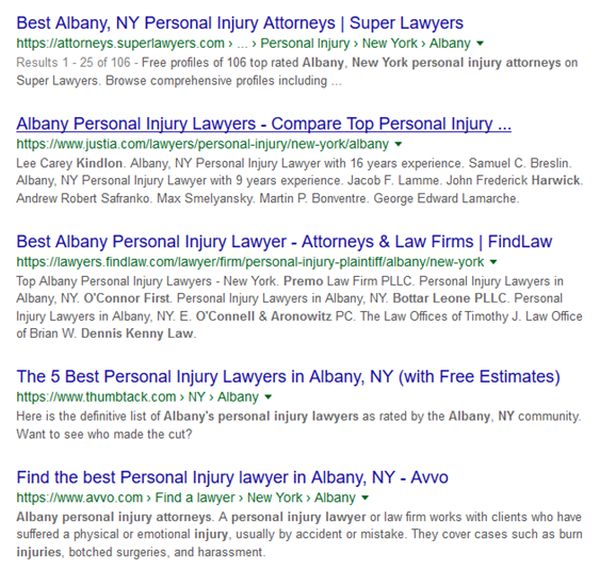In the good old days (circa 2009), Google supposedly only used about 200 ranking factors to determine the SERPs.
A lot has changed in the past 10 years.
But one thing that hasn’t?
You don’t need to sweat every ranking factor.
Some variables carry much more weight than others.
If you just focus on the essentials, you can still crush it in 2019. This post will delve into what those factors are and what is involved to optimize for each.
1. Mobile-First
Google officially began rolling out the mobile-first index in March. Smart marketers were taking a mobile-first approach long before the official rollout.
According to Google’s Danny Sullivan:
“Neither mobile-friendliness nor a mobile-responsive layout are requirements for mobile-first indexing. Pages without mobile versions still work on mobile, and are usable for indexing. That said, it’s about time to move from desktop-only and embrace mobile :)”
Here are some basics for making your site mobile-friendly:
- Make your site adaptive to any device; be it desktop, mobile or tablet.
- Always scale your images when using a responsive design, especially for mobile users.
- Use short meta titles. They are easier to read on mobile devices.
- Avoid pop-ups that cover your content and prevent visitors from getting a glimpse of what your content is all about.
- Less can be more on mobile. In a mobile-first world, long-form content doesn’t necessarily equate to more traffic and better rankings.
- Don’t use mobile as an excuse for cloaking. Users and spiders need to see the same content.
2. Technical SEO
Some find the idea of performing technical SEO to be intimidating.
Thanks to the many SEO tools available, an SEO audit is no longer a daunting task.
The key, however, is to know how to interpret the data provided and what to do with it.
For starters, you should check the following:
- Make certain your site qualifies as being mobile-friendly.
- Check for status code errors and correct them.
- Check the robot.txt for errors. Optimize if needed.
- Check your site indexing via Google Search Console. Examine and fix any issues discovered.
- Fix duplicate title tags and duplicate meta descriptions.
- Audit your website content. Check the traffic stats in Google Analytics. Consider improving or pruning underperforming content.
- Fix broken links. These are an enemy of the user experience – and potentially rankings.
- Submit your XML sitemap to Google via Google Search Console.
3. Website Speed
Page speed has a direct impact on both traffic and conversions.
According to Google, “the average time it takes to fully load a mobile landing page is 22 seconds… yet 53 percent of mobile site visitors leave a page that takes longer than three seconds to load.”
Slow page speed creates a poor user experience, which is why Google takes page speed into consideration as a ranking factor.
Best practices for optimizing page speed include:
- Minimize HTTP requests for the different parts of the page, like scripts, images, and CSS.
- Reduce file size by compressing them and combine common files to reduce requests.
- Have both CSS and JavaScript load simultaneously.
- Make JavaScript load after important files have.
- Reduce DNS lookup time.
- Improve server response time.
- Use an appropriate hosting solution.
- Leverage browser caching.
- Minimize image sizes.
- Use a CDN.
- Keep plugins to a minimum.
- Keep redirects to a minimum.
4. User Intent
Writing “great content,” optimizing it, and getting trusted links is now just the start for ranking a keyword.
As machine learning and artificial intelligence continue to evolve, each will carry more weight in Google’s core algorithm.
The ultimate goal for Google is to understand context and serve results based on searcher intent.
This makes advanced level keyword research and selection more important than ever.
For starters, you need to recognize there are some keywords and queries that will be impossible to rank for.
A keyword’s contextual relevance must align with a search query.
Before spending time and resources trying to rank for a phrase, you need to look at the current ranking websites and phrases.
Unless your website and landing page are similar to what is ranking, chances are it won’t happen.
Take the query [albany new york personal injury lawyer] for example:

At one time, this query resulted in a series of independent lawyers and law firms appearing at the top of the search results.
That’s changed.
Google is now giving preference to law directories:

In this instance, because there is still a chance to rank in Google maps, it’s still worth pursuing this phrase. If not for that opportunity it would be a waste of time.
Google appears to have concluded that searcher intent is to find a series of lawyers or firms – not just one.
5. Content Marketing
It is projected that by 2020, 44 zettabytes of data will be produced every day.
To put this in perspective, that’s the equivalent of 8.48 trillion songs or 1,440 years of HD video every day.
The challenge to break through the clutter will become exponentially more difficult as time passes.
In order to do so:
- Create a content hub in the form of a resource center.
- Fill your resource hub with a combination of useful, informative, and entertaining content.
- Write “spoke” pieces related to your resource hub and interlink.
- Write news articles related to your resource and interlink.
- Spread the word – promote your news articles on social channels.
- Hijack trending topics related to your content – promote on social media.
- Use your smartphone camera. Images and videos typically convert better than text alone.
- Update stale and low trafficked content.
6. Schema
Schema markup, once added to a webpage, creates a “rich snippet” – an enhanced description which appears in the search results.
All of the leading search engines, including Google, Yahoo, Bing, and Yandex, support the use of microdata.
The real value in schema is that it can provide context to a webpage and improve the search experience.
There is no evidence that adding schema has any influence on SERPs.
What Is Schema Used For?
- Businesses and organizations
- Events
- People
- Products
- Recipes
- Reviews
- Videos
If you find the thought of adding schema to a page intimidating, you shouldn’t.
Schema is actually quite simple to implement.
If you have a WordPress site, there are a number of plugins that will do this for you.
7. User Experience
User experience (UX) is centered on gaining insight into users, their needs, their values, their abilities, and their limitations.
UX also takes into consideration business goals and objectives.
Best UX practices focus on improving the quality of the user experience.
According to Peter Morville, factors that influence UX include:
- Useful: Your content needs to be unique and satisfy a need.
- Usable: Your website needs to be easy to use and navigate.
- Desirable: Your design elements and brand should evoke emotion and appreciation.
- Findable: Integrate design and navigation elements to make it easy for users to find what they need.
- Accessible: Content needs to be accessible to everyone – including the 10 percent of the population with disabilities.
- Credible: Your site needs to be trustworthy in order for users to believe you.
- Valuable: Your site needs to provide value to the user in terms of experience and to the company in terms of positive ROI.
8. Link Building
Links have been among the top ranking factors for quite some time now.
In 2019, what I think will change is that Google will become even more adept at identifying and devaluing spammy links.
That being the case, quality will continue to trump quantity.
The Best Link Building Strategies for 2019
- Utilize Resource Pages (a.k.a. linkbait or Skyscraper technique).
- Broken Link Building.
- Guest Posting (not the spammy kind).
- Backlink Mining.
- Link Reclamation.
- Claiming Unlinked Mentions.
Conclusion
The mounds of information and disinformation served up daily in various marketing feeds can be overwhelming.
If you aren’t careful it can lead to analysis paralysis and nothing gets done.
That said, if you just focus on these eight essentials you will set yourself up for success in 2019 and beyond.
Source: Search Engine Journal






